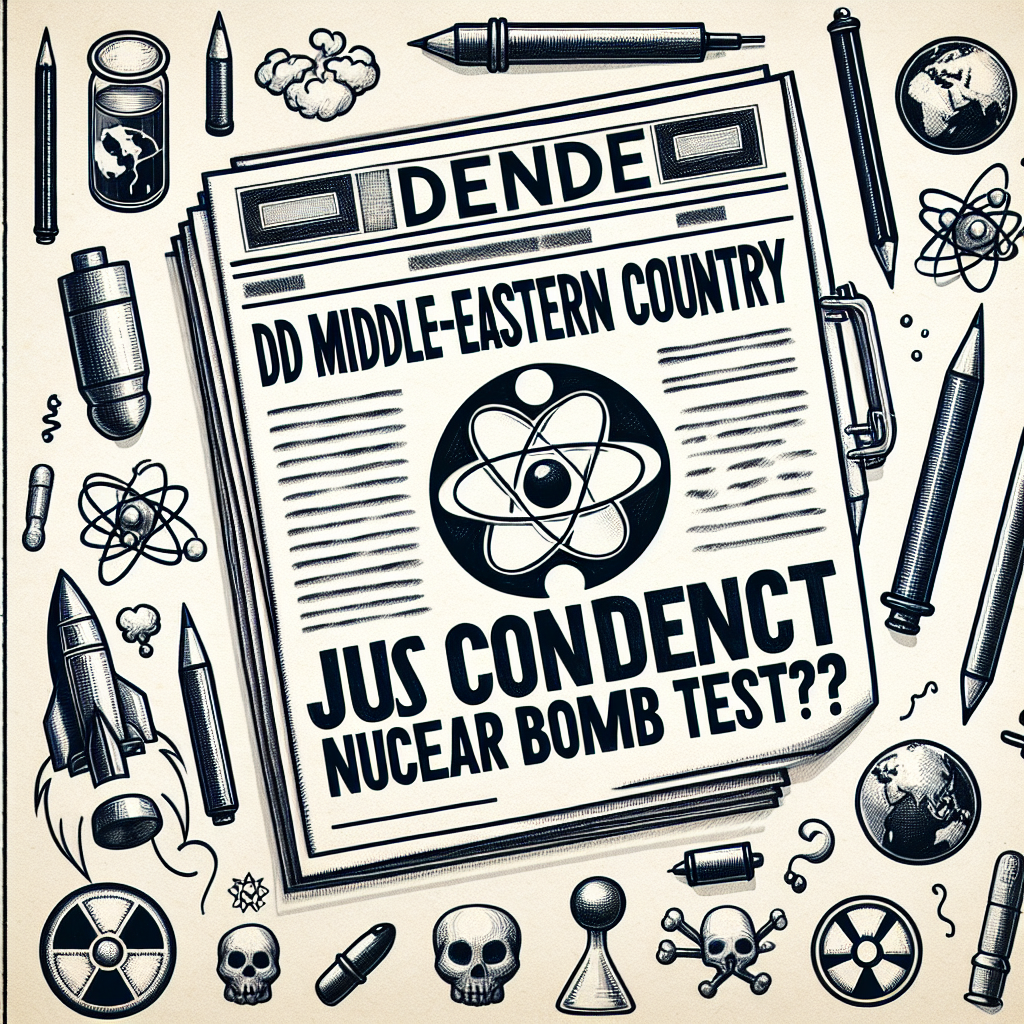Recent developments indicate that Iran may be nearing nuclear bomb capabilities, with two alarming news items suggesting urgent scrutiny of the situation. The first incident occurred on October 5, when an Armenian seismic station detected a 4.4 magnitude event in Iran, which researchers have characterized more as an explosion than an earthquake. This raises serious concerns that Iran might be conducting nuclear tests under the guise of geological activity. The implications of such activities pose a significant threat to regional stability, especially given the existing tensions with Israel and the United States.
Adding to the foreboding atmosphere, a private conversation revealing statements made by an official close to Iran’s Supreme Leader, Ayatollah Khamenei, suggests a readiness to unleash nuclear capabilities if threatened. Such rhetoric—that “Allah has already given us everything, far from the eyes of the Zionists” and that Iran is prepared to respond to perceived existential threats—demonstrates a willingness to escalate military tensions. This marks a troubling evolution in Iranian discourse that potentially signals a shift in nuclear doctrine following perceived aggressions, mirroring actions taken by nuclear powers like the United States and Russia in recent years.
Additionally, Iran’s announcement of its intent to forge a “Resistance Pact” with several Middle Eastern allies further accentuates the dangerous trajectory. This pact aims to provide collective military and economic support in the event of an attack by the U.S. or Israel, explicitly involving regional groups such as Hamas, Hezbollah, and the Houthis, who have a history of conflict with Israel. Although this poses concerns distinct from the threat of potential nuclear use, it highlights the growing geopolitics of aggression and alignment among Iranian proxies, increasing the possibility of direct conflict involving nuclear stakes.
Moreover, Iranian authorities have signaled a willingness to reconsider its nuclear doctrine if faced with aggression from Israel, reminiscent of changes made in nuclear policies by Western powers under similar circumstances. Reports of an Iranian-Russian collaboration hint at the exchange of Iranian missile capabilities for Russian nuclear technology. This arrangement draws scrutiny in light of ongoing tensions in the region, particularly with Israel, that could heighten the risk of administration-backed strikes on Iranian nuclear facilities.
The seismic event detected on October 5 has been linked to Iran’s key nuclear facilities located south of Tehran, specifically in the Kavir desert region. Notably, although earthquakes usually exhibit “aftershocks,” which nuclear tests do not, the lack of this seismic trait raises suspicions about the nature of the detected event. Such historical distinctions, observed in past nuclear tests and earthquakes elsewhere, add credibility to the hypothesis of undeclared nuclear activity in the region, suggesting this could represent a significant leap in Iran’s nuclear ambitions.
Compounding these concerns is the rapid expansion of Iran’s uranium enrichment program since 2018, dramatically reducing the timeframe for producing weapons-grade uranium from over a year to just weeks. Currently, Iran is enriching uranium up to 60% fissile purity, perilously close to the 90% level required for weapons-grade material, indicating that, if further refined, Iran could theoretically create nearly four nuclear bombs with the enriched material available. The lack of response or coverage from Western media regarding these potential developments reflects a dangerous complacency in monitoring Iran’s nuclear progress, underscored by the International Atomic Energy Agency’s assessments. Without heightened awareness and proactive measures, the window for diplomatic intervention may be closing rapidly, placing global security in jeopardy.

